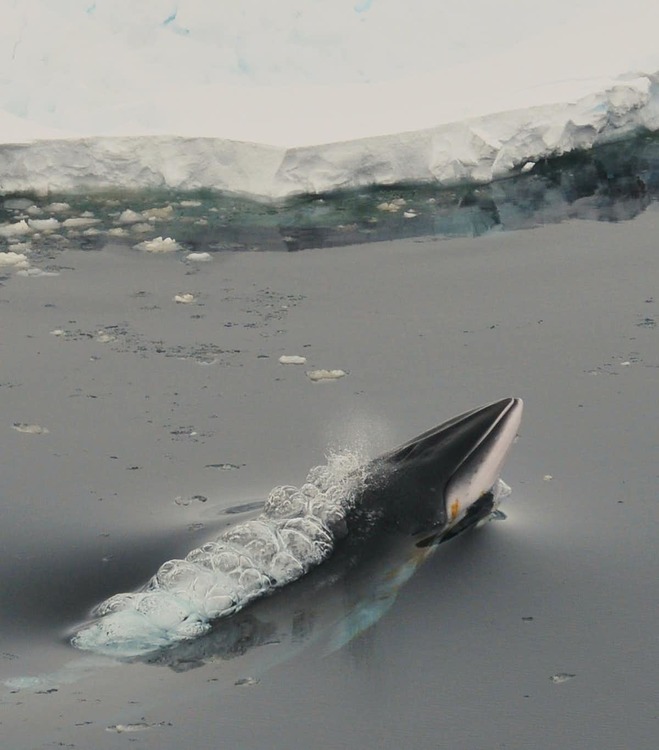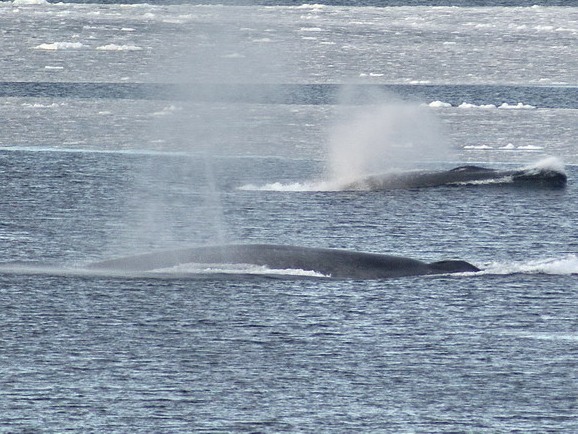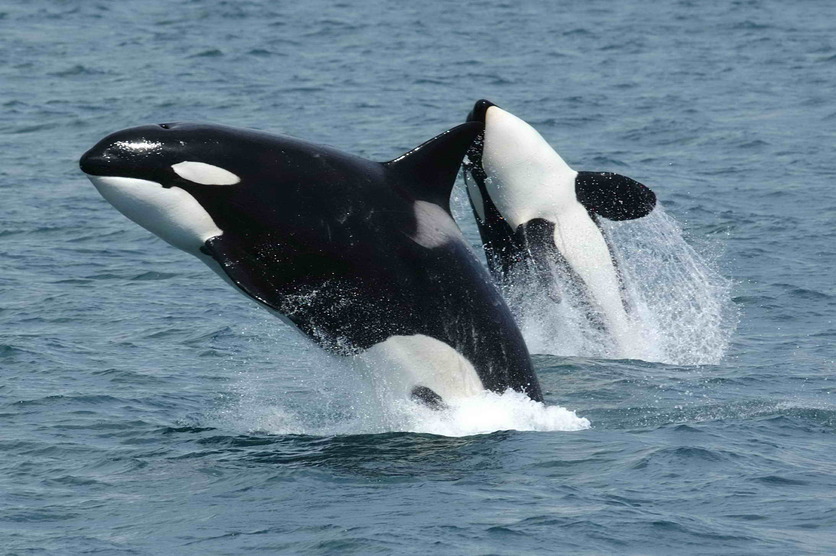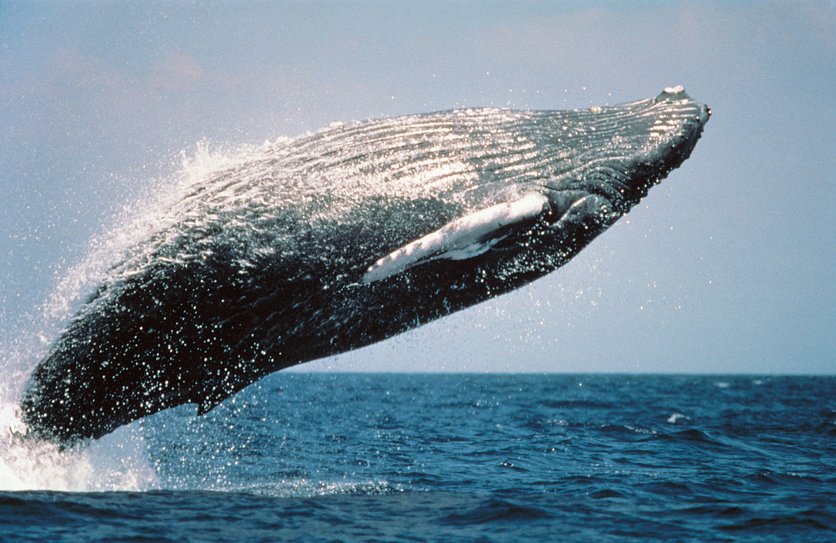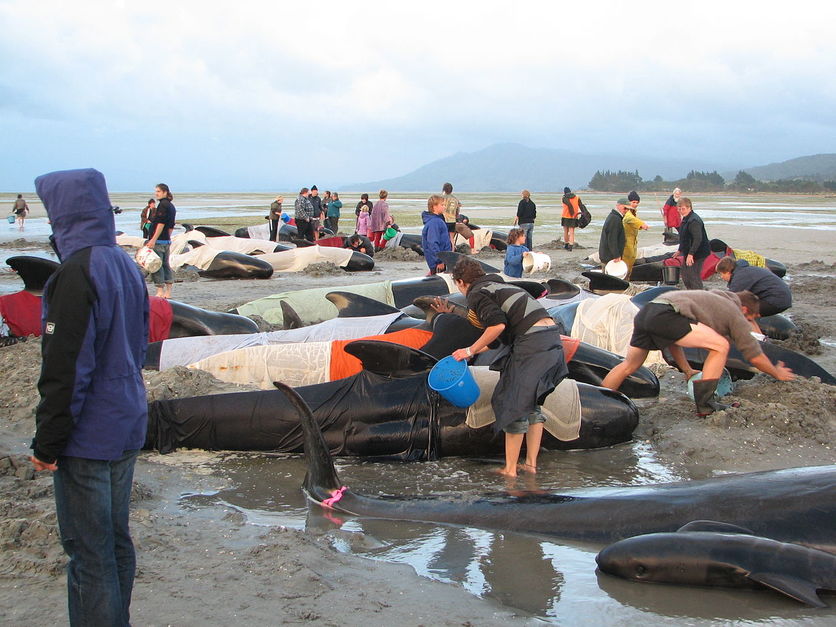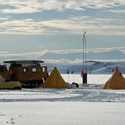Whales make up some of the largest animals on earth. In fact, the largest animal that has ever lived is believed to be the blue whale.
Whales are actually mammals, and like humans, they have lungs. They breathe through a blow hole, drawing air into their lungs, so even while they may spend all their time in the water, they must come up to the surface in order to breathe.
Antarctica is home to a number of whales.
Blue whale
These huge animals can grow up to 30 metres long, but what might surprise you is they get to this size on a diet of krill. They take huge mouthfuls of water and krill and, instead of teeth, they have what are called ‘baleen plates’, which act like a sieve, allowing the whale to push the water out of its mouth while keeping the tasty krill inside.
Blue whales tend to travel by themselves or in pairs, but they are able to stay in contact with other whales through loud calls that can be heard around 150 kilometres away. This sound gives the blue whale the honour of not only being the biggest animal in the world, but it is thought also the loudest!
Orca or killer whale
Orcas are the black and white whales that we often see on TV and that are found all over the world. In many ways, they deserve their name of killer whales because they hunt in packs called pods (usually made up of family members) and they are efficient predators that share their kill among the group. Their diet is varied – they eat fish, squid, sharks, seals, penguins and even other whales.
Orcas use a special technique called echolocation to find objects and navigate the world. They send out sounds (that sound like clicks and squeaks to us) that bounce back off objects, and the orcas use this information to determine how far away something is or how big it is. In this way, they can swim in the dark and not worry about getting lost!
Though commonly called whales – orcas are actually the largest member of the dolphin family.
Humpback whale
Humpbacks are highly vocal and highly social animals. Like the orca, they travel in large groups – for humpbacks, sometimes these pods number up to 200 individuals. The male humpback sings complex songs, sometimes singing for hours at a time. But it’s not always the same song – slowly, over time, the song changes so that, in a few years, it is a completely different song. And despite scientists being interested in how this singing is done, no one is yet sure. Humpbacks have no vocal cords, no air escapes during the singing sessions and their mouths don’t move.
Strandings
Strandings, also known as beachings, is a phenomenon in which whales and dolphins strand themselves on land, usually on a beach and if they cannot be re-floated they usually die. Unfortunately New Zealand has one of the highest rates of whale strandings in the world, averaging about 300 whales and dolphins per year. The Department of Conservation manages strandings and rescues, with the help of local communities, volunteers and organisations like Project Jonah.
It is still not known why this occurs, though a possible link to the use of mid-frequency active sonar has been suggested. Dr Craig Radford is investigating the impact anthropogenic noise could have on marine animals in the Hauraki Gulf, this is particularly important to assist with the protection of the endangered Bryde’s whales
In February 2017, New Zealand’s third-largest whale stranding event occured. Around 650 pilot whales beached themselves at top of the South Island on Farewell Spit, 350 died but the others were either able to swim away or were refloated by volunteers. The largest whale stranding was in 1918 when about 1,000 pilot whales came ashore on the Chatham Islands.
New Zealand's coastline is sometimes visited by other whale speces, such as Southern right whales and Bryde’s whales.
Te ao Māori connections
Ngā ika a Tangaroa provides a brief introduction to Māori knowledge of tohorā and other children of Tangaroa.
Traditional pātaka kai (storehouses) are often adorned with whale-like designs as a symbol of abundance and wealth for the iwi. A pūrākau about the chief Tinirau and his pet whale Tutunui is one of betrayal, treachery and greed. It also illustrates of the complex relationship Māori have with whales as guardians, friends and food.
Student activities
Constructing this Kiwi Conservation Club taxonomy dial will encourage students to look more closely at the physical characteristics of the different whale families.
Scientists from the Marine Science Department at the University of Otago use an underwater hydrophone to find out more about the lives of sperm whales. Find out more in this article from the Kiwi Conservation Club.
Useful links
Discover move about whales and strandings on the Department of Conservation website.
Project Jonah have a World of Whales educational resource kit that is free for New Zealand schools. Watch this YouTube video to see the kit being used and further information, including how to order, is here. They also have a volunteer schools educator for the Wellington region.
Marine species expert, Hannah Hendrik talks whale strandings, post-mortems and crucial data in this podcast from the Department of Conservation.
In this Science on a Napkin video listen to Dr Dr Rochelle Constantine, a marine biologist at The University of Auckland, talk about the reason behind the difference in recovery between the Oceania and East Australian Humpback Whale populations.
